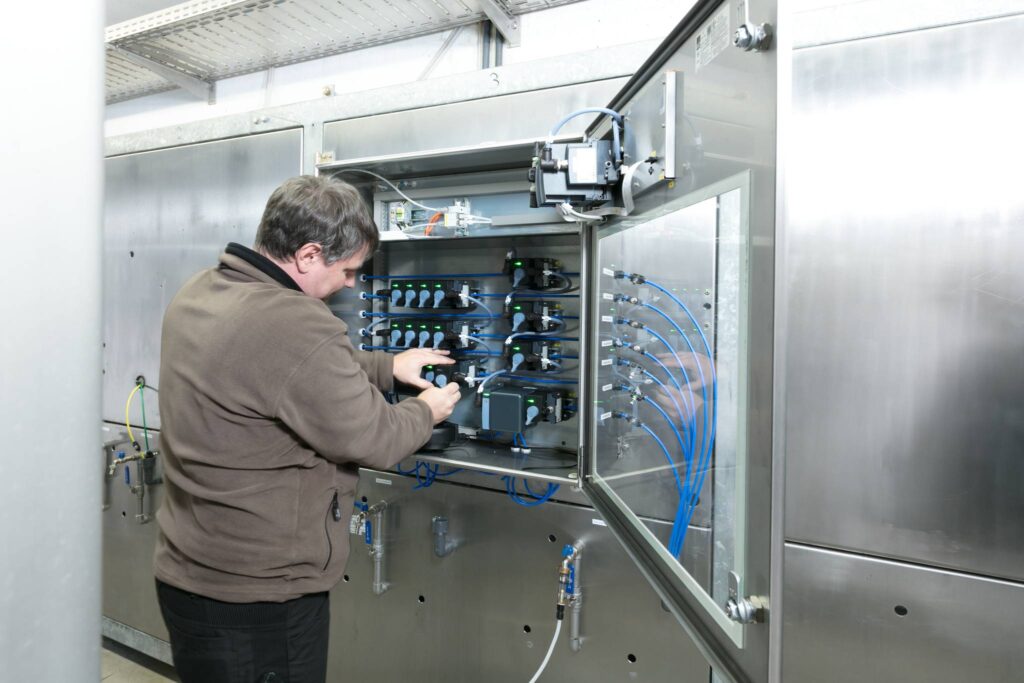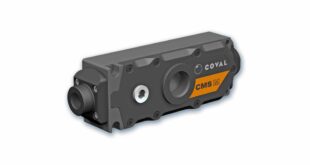A critical element for the disinfection of drinking water, is the quick and accurate measurement of free available chlorine. Until now, solutions to achieve this have been labour-intensive and relatively slow, compromising the ability of municipalities to react to changes in concentrations and dose effectively. Bürkert’s Type 8905 online water analysis system uses the MS02 Chlorine Cube sensor, which overcomes these limitations. Thanks to a design, it delivers long service intervals, dependable accuracy and 30-second T90 response times to ensure safe, disinfected water.
Getting the measure of old limitations
Most municipalities rely on two types of chlorine measurement solutions. The first is an amperometric sensor with an electrolyte buffer, providing a T90 time of between two and three minutes. A membrane cap prevents direct media from contacting the electrodes, stopping the formation of deposits upon them.
The primary function of the buffer is to provide a reference electrode to be stabilised, while its other function is to buffer the water pH to around 6. This electrolyte needs to be replenished regularly (every 12 weeks in some cases) to maintain accuracy, which increases maintenance costs. Another issue is that if the pH value is wrong, this will translate to inaccurate free available chlorine measurements and incorrect dosing. In this case, a time-consuming offline test is required.
Colorimetric analysers are more accurate, making them better for critical applications, but they still have limitations. Taking a sample, mixing it with a reagent and gauging the colour depth may eliminate any issues arising from pH, though the trade-off is extended T90 times, with some taking anything up to 15 minutes to fully react.
Consequently, operators are slow to identify and react to changes, potentially affecting water quality with either under or over-dosed chlorine levels. While offering longer service intervals than chlorine probes (around 1 to 2 years) the various tubes, valves and pumps in colorimetric analysers mean maintenance is complex.
Bürkert’s MS02 Chlorine Cube sensor is a distinct technological advancement compared to traditional amperometric sensors and colorimetric analysers. Featuring a design, the game-changing MS02 dramatically improves accuracy, responsiveness and maintenance requirements.
The MS02 offers a T90 time of only 30 seconds. This performance is possible thanks to its innovative construction: an amperometric sensor on chip design protected by an immobilised membrane similar to a thin sponge. The membrane prevents the build-up of heavy elements forming without an electrolyte buffer, delivering exceptional T90 times and greatly reducing maintenance.
Without the need for electrolyte maintenance, the MS02 makes a highly economic option for the Type 8905 online water analysis system. Users in Europe and Australia have reported continuous operation, some for over 2 years without issue, which, when compared to the service intervals of traditional amperometric sensors, provides a return on investment (ROI) of around 12 months.
Improved sensitivity with less waste
The MS02 is so proficient, its sensitivity makes it suitable for zero chlorine applications common in the pharmaceutical and medical sectors. For processes with purified water, such those using reverse osmosis membranes, the rapid T90 times of the MS02 ensure that any chlorinated water can be quickly directed away, protecting the membrane and stopping impurities from affecting final product quality.
Users can expect less wastage as well. Materials in chlorine sensing equipment generally aren’t approved for drinking water, so any analysed samples must be sent to drain for retreatment. A typical off-line chlorine sensor can require a flowrate of between 15 to 30 litres per hour, while the MS02 would only send 6 litres to drain over the same time period.
A standalone or turnkey solution
Featuring IP65 ingress protection and 6 mm diameter push fit connectors for flexible tubing, the MS02 is simple to install and commission. A CANopen signal output allows information to be transferred to a wide range of industrial protocols or displays.
The MS02 can also be seamlessly paired with additional cubes to measure other parameters such as pH, oxidation-reduction potential (ORP), conductivity and turbidity as part of the Type 8095 online water analysis system. This highly flexible solution offers a great value proposition and is incredibly compact – some facilities have been able to downsize from a 4 m sample board to a 1 m installation panel while retaining all the required lines and sensors. Cubes are hot-swap compatible as standard, so removal is possible without process downtime. A pH sensor enables pH compensation to assist the MS02 in measuring free chlorine accurately.
Novel engineering has allowed the Bürkert MS02 to unlock a paradigm shift in chlorine measurement. Now, municipalities have a proven, turnkey solution for improving water disinfection that reduces operating expenditure (OPEX) while eliminating the pain points of traditional alternatives.
 Engineer News Network The ultimate online news and information resource for today’s engineer
Engineer News Network The ultimate online news and information resource for today’s engineer






